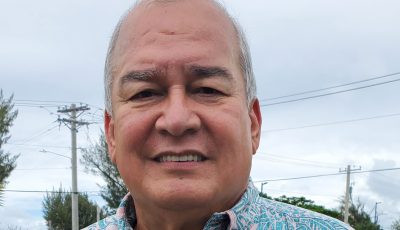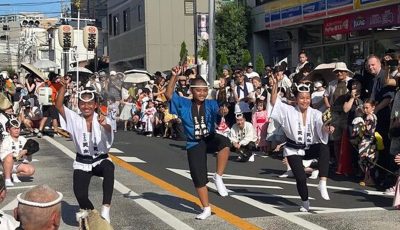Romanticizing the NMI’s future
Someone once said that the future is now. It’s all about engaging thoughtful planning, employing spiritual wellbeing and mindfulness. But with the way things are today, it’s a hopeless case where most villagers literally drown in the filthy swamp of misery in abject poverty. Discouraging!
I had to defer romanticizing or dreaming of a more appealing time of the “what might have been” had we really planted our heels firmly on the ground, strengthening self-government. Unfortunately, we’ve trashed it in mañana land or walked the entire nine yards with grand ignorance. Anyway, let’s look beyond what’s known as dystopia—meaning “where nothing works”—if only to see what happens when we begin anew.
The NMI did due diligence resetting its button reining in quality leadership. It shifted the usual shallow and hollow nepotistic voting habit to one of fully considered selection of leadership based on academic and professional competence.
Wit this, it focused on “anchor” or lasting investments. Difficult the initial period may be, it took nearly three to five years to begin realizing the fruits of that decision. It was the beginning of a new era or journey to see everybody’s boat lifted from the bottom of the harbor of bankruptcy. More lasting investments came to shore. The NMI opted for integrated economic ventures that encouraged reliable revenue generation streams.
We started working the clock on alternative energy. After the system is set and refined, power generation became stable, reliable and affordable. It was equipped to meet current and future development needs.
CUC started raking in an historic $40 million in positive cash. It used its new money to improve water and sewer even on new visitor facilities and residential areas. It eventually invested in underground water source (like the water system in Okinawa) to support the community with more than sufficient water even during prolonged droughts.
The local government partnered with a major investor establishing an industrial park in Lower Base. The new shipyard facility hired more than 1,000 locals and trained them on ship repair and shipbuilding at federal minimum wage. The firms worked with the feds for training funds, expanding training courses at both the institute and NMC vocational schools. Upon completing training, U.S. Labor certifies each employee as they begin new careers at decent wages and salaries.
The need for leadership
The NMI became the shipbuilding venue for countries like nearby Japan, South Korea, Taiwan, Singapore, Thailand, Malaysia, Indonesia and other countries that use the sea-lanes for trading purposes. It was a way for these countries to use U.S. built ships to expand their shipping industry throughout Japan, Asia and the U.S. It means millions, if not billions, of dollars more for the NMI. Could this be done? It’s highly feasible and it only needs one thing from our side: leadership!
Eventually, the NMI rebounded financially. We finally had enough money for healthcare, education and other socio-economic programs, including major strides in the farming and fishing industries. We started reaping more than $300 million in annual revenues over the paltry $140 million we’re stuck with today.
It’s the NMI waiting for real-time progress if only we do the thing right—anchor investments—by doing it right. I don’t think we have much of an option given that there’s nobody else around to make the best of opportunities for us.
The new lasting investments enabled local government to focus on improving wealth and jobs creation. Not only was the NMI successful in jobs creation, it also ably paved the way for “good paying jobs.”
It seems all is well and dandy but equally discouraging is the obvious fracturing and trashing of opportunities to make these isles a better place to live. I only found it by romanticizing the “what might have been.” Moving in this direction requires leadership whose mettle is grounded in his/her vision and spiritual wellbeing—helping others move ahead—over the greedy agenda of self.
The Manglona decision
The Manglona decision in the Davis lawsuit allowing voting on local initiatives, e.g., disposition of Article 12, drew mixed reactions from the community.
Locals are quizzing why should someone who isn’t an owner of land on the islands (legally prohibited by this constitutional provision) be allowed to vote on the issue?
It brings into focus “equal rights” for all citizens or “equal representation” where the indigenous people in territories and the NMI have only seen inequality. Are we supposed to tacitly accept such inequities with servility?
I understand U.S. history on this score but how do we satisfy “equality” that is basically unequal all the way around. Why would geography (outside the 50 states) prohibit the participation of citizens in voting for U.S. presidents?
Why the indignity of participation in only one chamber of the U.S. Congress where the vote of delegates count when it doesn’t count and doesn’t count when it counts? Why are Native Americans allowed to limit landownership to Indians while the same standard is seen as unconstitutional out here?
These are legitimate questions requiring resolution far removed from imposing legal excuses emanating from the viewpoint of the founding fathers. The issue is the truthful attainment of equality in the rights of all citizens and representation in the most powerful chambers on earth.
In recent past, these questions were relegated to the intent of the founding fathers or taxes territories must remit into the federal coffers. It’s difficult amending pertinent provisions of the U.S. Constitution given that this would require approval by some 34 states.
As such, the ball of inequality rolls on in perpetuity doused with more legal rationalization than the actual effort to resolve the issue with finality. Answers to these issues must be attained hopefully someday soon. A pipe dream?



























